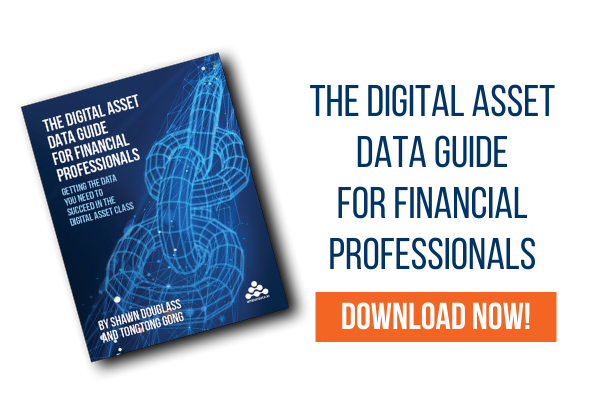
While cryptocurrency headlines are typically occupied by Bitcoin and Ethereum, with some attention paid to altcoins like Shiba and Doge, stablecoins dominated the news recently thanks to the controversy surrounding the Terra (UST) and Luna coins.
As the name implies, stablecoins are designed to be stable, their value designed to equal that of another asset (most often, the US dollar).
What kind of stablecoins are there?
There are two main types of stablecoins: asset-backed and algorithmic.
Asset-backed stablecoins
Asset-backed stablecoins act similar to pegged fiat currencies, where their value is maintained by investment reserves held by the issuing entity.
In addition to being backed by fiat currencies like the US dollar, asset-backed stablecoins can be backed by other asset classes, including other cryptocurrencies or commodities (similar to how national currencies were once backed by gold and/or silver).
The most well-known stablecoin, Tether (USDT), is tied to the US dollar and is backed by US-dollar reserves.
Another asset-backed stablecoin is Wrapped Bitcoin (WBTC), which represents Bitcoin on the Ethereum blockchain. WBTC is backed by Bitcoin 1:1.
Algorithmic stablecoins
Algorithmic stablecoins, like Terra, are more novel and are entirely a creation of the cryptocurrency age. They are similar to asset-backed stablecoins in that their peg depends on a second token, but are different in that their value is not tied to the value of that token, but to a separate asset (typically a second token).
Terra was an example of an algorithmic stablecoin. Its value was pegged to the value of the US dollar, but this valuation was maintained by a smart contract that managed the supply of the Luna token. The smart contract would increase or decrease the supply of the Luna token based on market demand to maintain the value of Terra at 1:1 to the USD (with each $1 worth of Terra being exchangeable for $1 worth of Luna).
What purpose do stablecoins serve?
Stablecoins are a key component of the crypto ecosystem as a whole, and DeFi in particular, in that they serve as a store of value and a medium of exchange.
They allow traders and investors to keep money in cryptoexchanges without having to hold volatile coins (like a cash account at a stockbroker), and they simplify payments between counterparties by removing asset price fluctuations from the equation (similar to how the US dollar functions in international trade).
Additionally, many stablecoins offer staking rewards, allowing holders to earn interest on their assets while providing liquidity for the ecosystem.
Do stablecoins pose any unique risks?
Though the goal of a stablecoin is to maintain a price stability, there is a risk that external events could cause the price peg to be lost, leading to significant losses to holders. Stakers, in particular, are at risk as they may not be able to de-stake their coins to sell at a more favorable price.
Asset-backed stablecoins are considered lower-risk since holders can exchange their tokens for the equivalent value of the underlying asset. There have been questions about whether stablecoin projects like Tether have the reserves they claim to have and the quality of those reserves. An event similar to a major bank run would have to occur to test a fiat-backed stablecoins’ resiliency.
In contrast, because they’re not backed by the asset their value is tied to, algorithmic stablecoins have a higher risk of value loss. For example, a significant decline in the value of the associated token can result in the stablecoin depegging, causing significant losses to holders and potentially triggering a chain reaction of selling and de-staking that further depresses values. If enough selling and de-staking occurs, even if the project has significant reserves, it may be unable to restore the peg and the valuation. This is largely what happened to Terra and Luna, an event that wiped out about $17 billion of value in the process (not counting the losses from the broader crypto selloff that occurred as a result).
How can institutions manage stablecoin exposure and risk?
While crypto price volatility is expected, strategies that involve stablecoins depend on the stability. Even if a strategy does not directly involve staking or holding stablecoins, their role in the ecosystem means investors have to pay attention to their behaviors and fundamentals to protect their assets in case of another Terra/Luna-type crash or similar event.
One way to address risk is through Regulation. Regulation is expected as soon as year-end, which will bring much needed stability to stablecoins.
Additionally, it is critically important to have consistent, reliable, and complete data to effectively monitor the ecosystem's state and to identify and manage risks proactively. Amberdata is the leading provider of institutional-quality stablecoin data and is relied upon by a rapidly growing number of major institutions to power their digital asset strategies. Request a demo today to find out how our platform can help your institution succeed in the digital asset space.
Amberdata
Amberdata is the leading provider of global financial infrastructure for digital assets. Our institutional-grade solutions deliver data, analytics and comprehensive tools and insights that empower financial institutions to research, trade, and manage risk and compliance in digital assets. Amberdata serves as a...
